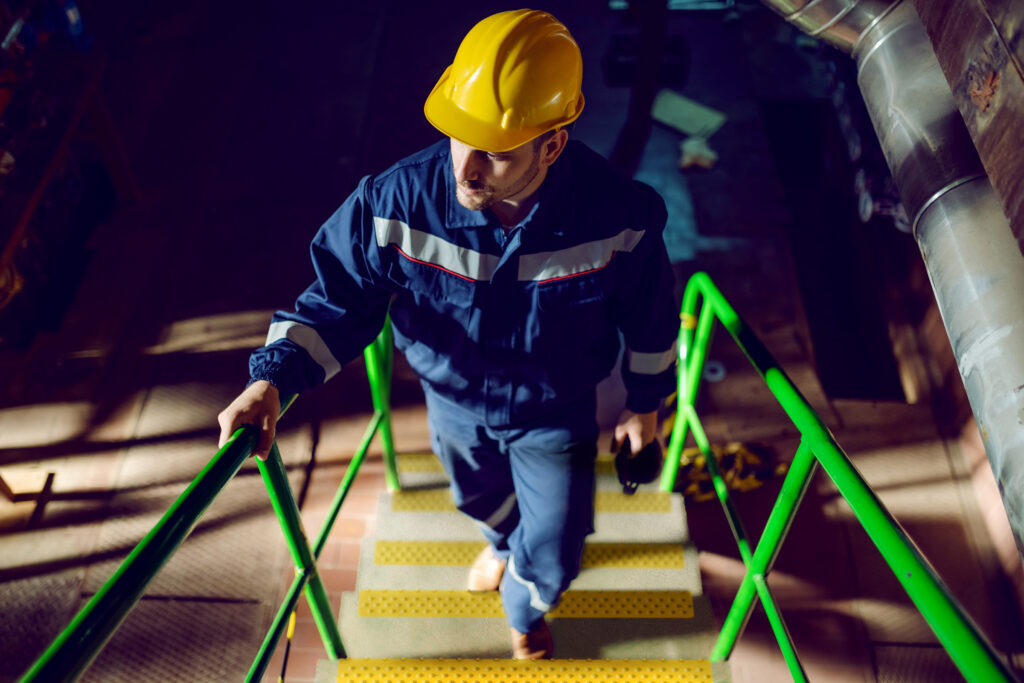
Falls are among the leading causes of workplace injuries across various commercial settings, from restaurants and retail stores to office buildings and health centers.
Beyond the physical repercussions of these falls, there are also significant financial costs for businesses. A single fall-related injury can lead to both financial and legal repercussions. Business owners may face expensive lawsuits, increased insurance premiums, and lost productivity due to injured employees. The impact on employee morale can also be profound, as the fear of injury or a lack of confidence in the workplace environment can lead to decreased job satisfaction and higher turnover rates. Ensuring a safe, slip-free environment is not only critical for the well-being of employees, but also for the long-term financial health and reputation of the business.
While it may be impossible to prevent every single fall, businesses must take proactive steps to reduce the risk and create a safer environment for employees and customers alike.
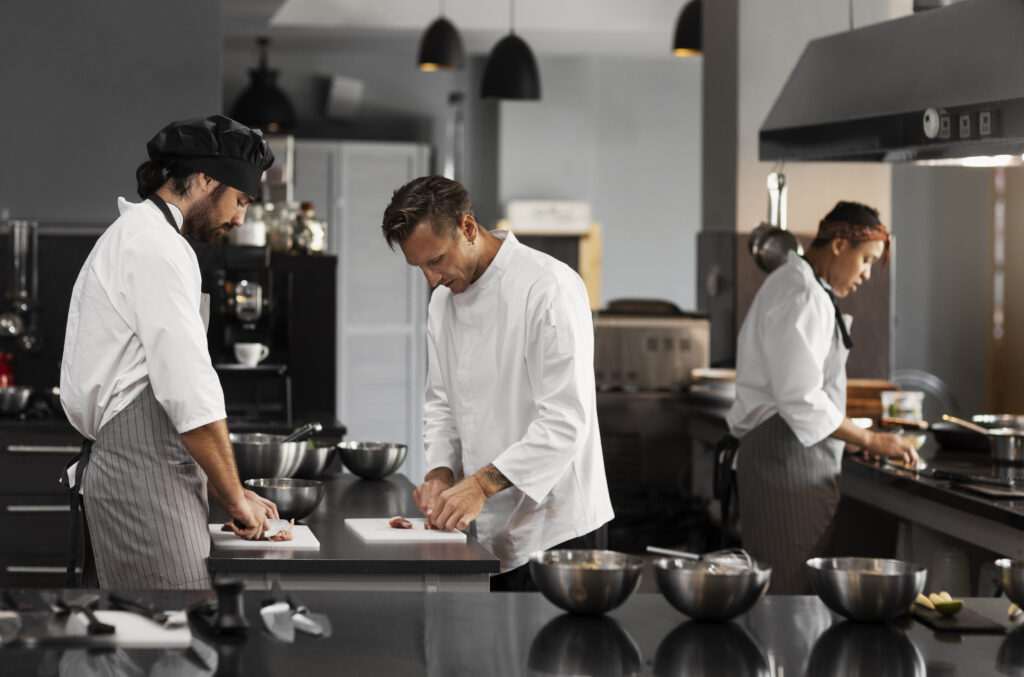
Commercial kitchens are one of the most hazardous environments when it comes to slip-and-fall accidents. Water, grease, and spilled food can create dangerously slick surfaces that put employees at constant risk. Cooks, dishwashers, and servers frequently navigate these hazardous areas at a fast pace, increasing the likelihood of an accident.
The National Floor Safety Institute (NFSI) reports that over 3 million food service employees and more than 1 million guests sustain injuries due to slips and falls in restaurants each year. The costs associated with these accidents exceed $2 billion annually and continue to rise by 10% every year. A slippery floor may not seem like a priority during a busy dinner rush, but it can cause an injury that costs more than the entire month’s profit.

Retail environments experience high foot traffic on a daily basis, which makes them particularly prone to slip and fall accidents. With so many people moving through aisles, there is an increased likelihood of spills, such as beverages or food, as well as wet floors from recently mopped surfaces or rainwater tracked in from outside.
These hazards are not only a concern for customer safety, but they can also have serious consequences for the store’s bottom line. A slip-and-fall incident can lead to costly liability claims, which may include medical expenses, compensation, and legal fees. Beyond the financial burden, a fall can cause irreparable damage to the store’s reputation, particularly in today’s digital age, where customers can easily share their experiences online through reviews and social media.
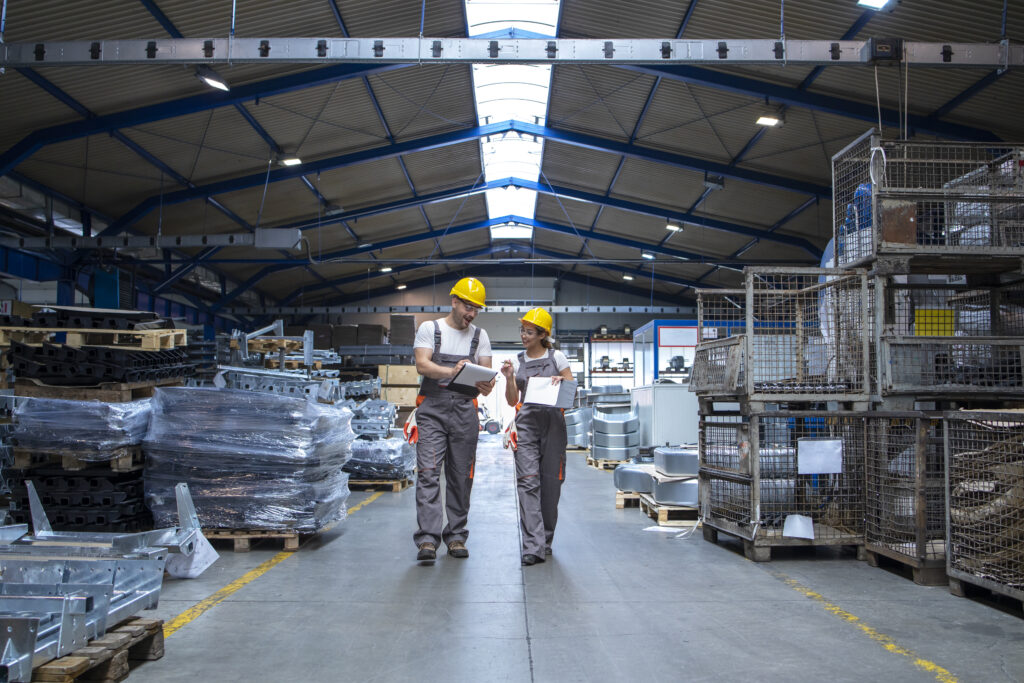
Warehouse stairs and floors are particularly vulnerable to a variety of hazards, including oil leaks, dust accumulation, and material spills. These common issues can create dangerously slippery conditions, especially in high-traffic areas where workers and machinery are constantly in motion. Forklifts, pallet jacks, and other heavy machinery frequently traverse warehouse floors, increasing the likelihood of debris being scattered and creating hidden tripping hazards that can be difficult to spot.
Without precautions, even minor spills or accidents can quickly escalate into significant safety risks. The combination of cluttered spaces, slippery surfaces, and moving machinery makes warehouses a particularly hazardous environment for slip and fall accidents. This not only poses a risk to workers’ physical well-being but can also lead to costly downtime, delays in operations, and damage to products.
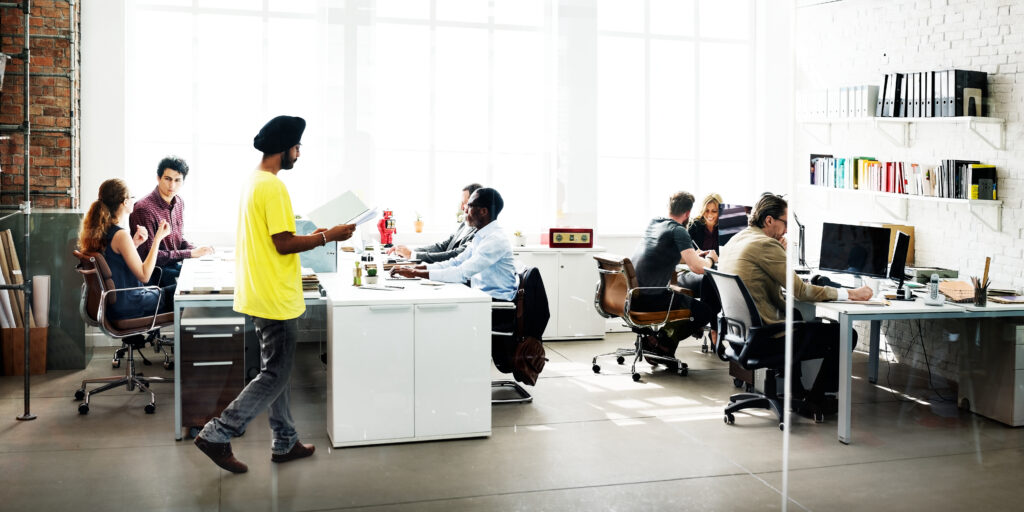
While office environments may not seem like high-risk locations, falls remain a significant concern. Many common workplace hazards can contribute to trips, slips, and falls, often in ways that employees may not immediately recognize.
Even everyday occurrences can pose unexpected risks. A wet floor near an entrance on a rainy day can quickly become a slipping hazard, especially if water accumulates without being promptly cleaned up. In colder months, melted snow and ice tracked in from outside can create similarly treacherous conditions. Office kitchens and break rooms also present potential dangers—spilled coffee, water from a leaking refrigerator, or an unnoticed dropped item can all contribute to an accident.

Healthcare workers and patients alike face a heightened risk of falls due to the unique challenges present in medical environments. Hospitals, clinics, and long-term care facilities are often bustling with activity, with staff moving quickly to respond to emergencies, transport patients, and perform critical tasks. This fast-paced movement, combined with smooth hospital flooring, increases the likelihood of slip and trip incidents.
One of the most common hazards in healthcare settings is spilled liquids. Whether it’s water from an IV drip, bodily fluids, or cleaning solutions used to sanitize surfaces, even a small spill can create a significant risk. Because hospitals operate 24/7, floors are frequently cleaned, and if proper precautions aren’t taken, freshly mopped surfaces can become dangerously slick. In areas such as operating rooms and emergency departments, where fluids are more commonly present, the risk is even greater.
In fact, the National Institute for Occupational Safety and Health (NIOSH) reports that slips, trips, and falls are the second most common cause of lost-workday injuries in hospitals.

Specifically, the incidence rate of such injuries on the same level in hospitals is 38.2 per 10,000 employees, which is 90% higher than the average rate for all other private industries combined (20.1 per 10,000 employees).
Failing to address fall risks in a commercial or retail setting can result in severe financial and legal consequences. Here’s what business owners risk by not implementing a reliable fall prevention solution:
Slip-and-fall injuries often require extensive medical treatment and time off work, leading to lost productivity and costly workers’ compensation claims. The cost of a workers’ compensation claim can vary significantly depending on the severity of the injury, industry, and location, but the National Safety Council (NSC) reports that the average cost of a workers’ compensation claim for a slip or fall is around $51,000 per incident.
If a customer falls on your premises, the consequences can be severe financially, legally, and reputationally. Beyond the immediate medical costs that can be anywhere from $3,000 to $50,000 depending on severity and treatment, businesses often face lawsuits, settlements, and lasting damage to their reputation, which can drive away future customers and increase operational costs.
A slip-and-fall lawsuit can be extremely costly, especially if negligence is proven. An average settlement payout can be $30,000-$50,000, and in severe injury cases, the settlement can exceed $100,000 to $1 million. Even if your business wins the case and does not have to pay the settlement, legal defense fees regularly range from $20,000 to $100,000, depending on the case and location.
Insurance companies use an EMR to calculate premiums. An EMR of 1.0 is average, while a higher number (e.g., 1.2) increases premiums, and a lower number (e.g., 0.8) reduces them.
A single moderate injury claim could increase a company’s workers’ comp premiums by 10–30%. Multiple claims or a severe injury (such as a fracture or disability) could cause a 50% or higher increase.
For example, if a business originally paid $50,000 per year in workers’ comp premiums and its EMR increased from 1.0 to 1.2 due to multiple slip-and-fall claims, the new premium could rise to $60,000 per year—resulting in an additional $30,000 in costs over three years.
OSHA and other safety regulators have strict guidelines regarding workplace safety, including preventing slips and falls. For example, failing to address slip, trip, and fall hazards can result in severe OSHA penalties. OSHA requires employers to maintain clean, dry, and hazard-free walking surfaces, with specific regulations for general industry (29 CFR 1910.22(a)), which most businesses fall under. If a business neglects to take preventive measures, such as installing non-slip solutions, maintaining drainage, or using proper signage, it risks facing serious violations ($15,625 per offense) or even willful/repeat violations ($156,259 per offense). Failing to correct hazards in a timely manner can lead to daily fines of $15,625 until the issue is resolved.
As outlined above, ignoring slip-and-fall hazards can cost a company tens to hundreds of thousands of dollars in medical expenses, legal fees, settlements, and increased insurance premiums. Many business owners assume, “It’ll never happen here,” but accidents are unpredictable, and just one incident can lead to devastating financial and reputational damage. Instead of waiting for a costly lawsuit or a serious injury, businesses must take proactive steps to prevent slip and fall hazards before disaster strikes. Investing in proper safety measures now can save money, protect employees and customers, and keep your business running smoothly.
When it comes to fall prevention, sometimes the simplest of solutions can be the most mighty. Adding additional traction to high-traffic or otherwise slippery areas can significantly decrease the chance of injuries due to slips and falls.
NSFI-certified HandiTreads ClearGrip and Grit Treads offer a superior solution for all types of commercial environments. Unlike temporary fixes like warning signs or routine mopping, HandiTreads provide a long-lasting, durable safety solution that enhances traction and significantly reduces the likelihood of slips and falls.
Is your location a more industrial environment? HandiTreads Aluminum Non-Slip Treads are the ideal non-slip solution.
While ClearGrip and Grit Treads provide excellent slip resistance for most commercial and retail environments, they may not be durable enough for heavy-duty industrial settings. If your facility experiences very high foot traffic, outdoor weather conditions, or exposure to oils, grease, and heavy machinery, HandiTreads patented aluminum non-slip treads offer a superior, long-lasting solution. Designed for construction sites, warehouses, manufacturing plants, and loading docks, HandiTreads provide permanent traction that won’t wear down over time, even under the toughest conditions. Their rust-proof, all-weather aluminum design ensures reliable safety year-round, making them the ideal choice for industrial environments where slip prevention is critical.
HandiTreads are designed to provide durable, slip-resistant protection in a variety of settings where safety is a top priority. Whether in high-traffic areas, workplaces, or commercial spaces, installing HandiTreads can significantly reduce the risk of slips and falls.
Here are some of the most common places where HandiTreads can be installed to maximize safety:
Kitchen Entryways & Food Prep Stations: Restaurants, cafes, and commercial kitchens experience constant spills, grease buildup, and moisture from cleaning. Placing HandiTreads in key locations—such as near sinks, stoves, and entryways—helps ensure that employees move safely without the risk of slipping.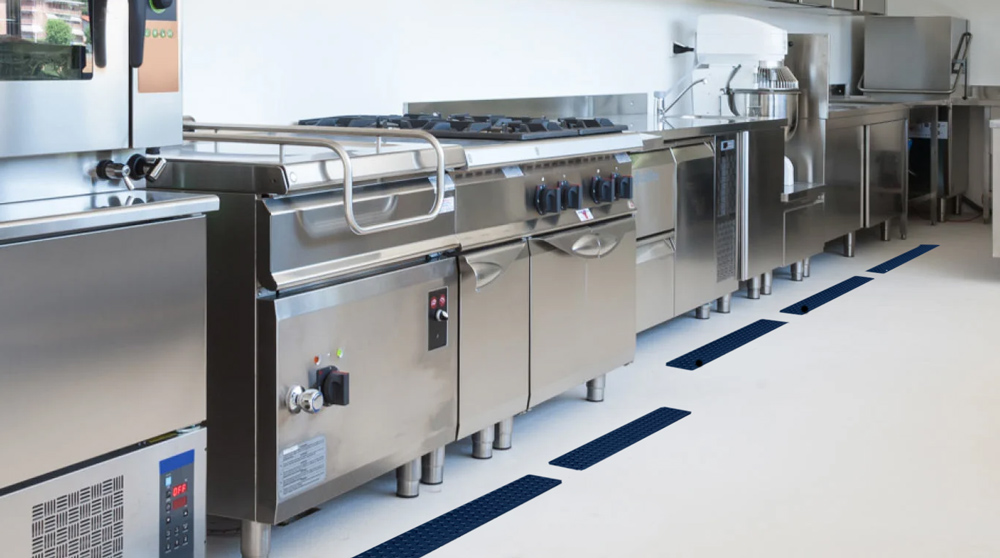
Retail Store Entrances & Stockroom Areas: Wet floors from rain, snow, or spills at store entrances can create a hazardous environment for both employees and customers. In stockrooms, where workers frequently move inventory and use ladders, securing high-traffic areas with HandiTreads can help prevent dangerous falls.
Office Building Staircases & Lobbies: Office environments may seem low-risk, but polished tile, hardwood floors, and staircases can become dangerous slip zones, especially when wet. HandiTreads add an extra layer of protection to entryways, lobbies, and stairwells, reducing the risk of accidents for employees and visitors alike.
Hospital Corridors & Patient Rooms: Healthcare facilities must prioritize safety and accessibility for both patients and staff. HandiTreads can be installed in hallways, patient rooms, and restroom areas to help prevent falls—especially for elderly patients, those with mobility challenges, and busy healthcare workers rushing between rooms.
Warehouse Loading Docks & Stairways: Warehouses are filled with slip hazards, from oil leaks and dust buildup to heavy machinery and high foot traffic. HandiTreads provide reliable traction on loading docks, ramps, stairways, and work platforms—ensuring workers stay safe while handling materials and equipment. (We recommend HandiTreads Aluminum Non-Slip Treads for these applications).
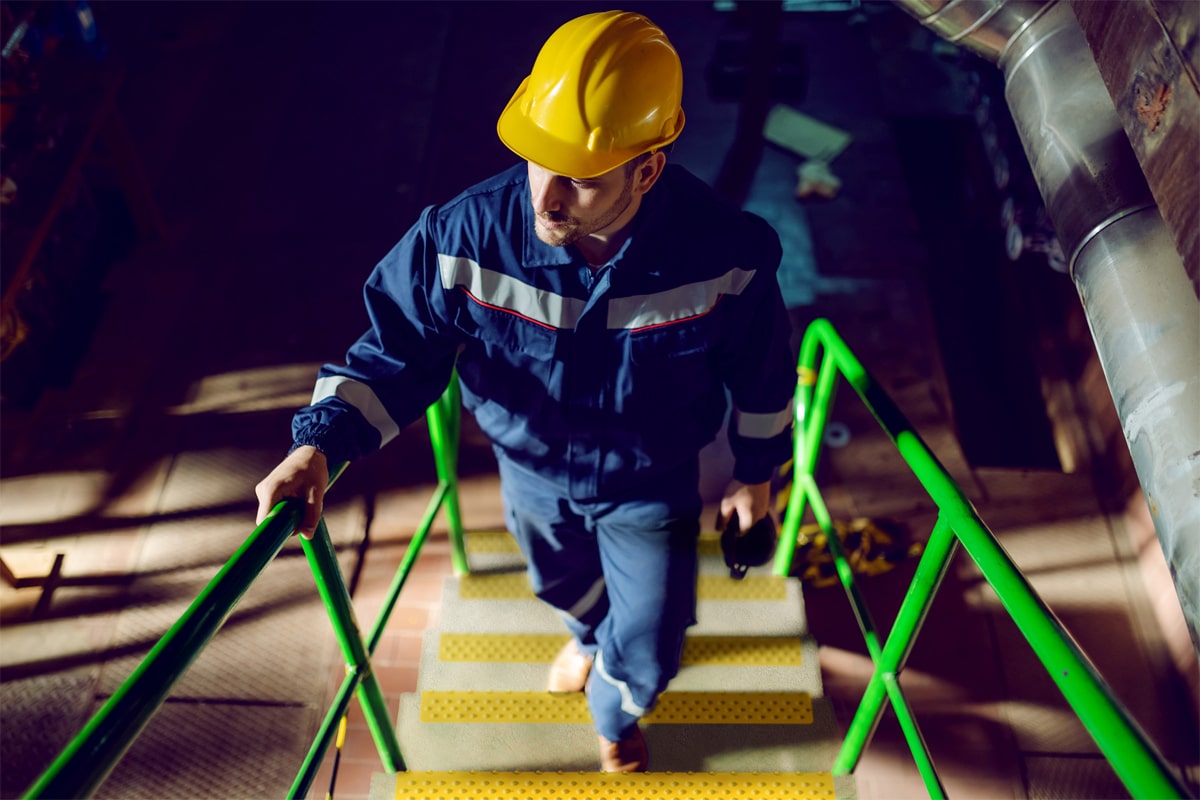
Preventing falls in commercial settings is not just about avoiding lawsuits—it’s about creating a safer, more efficient workplace for employees and customers. From busy restaurant kitchens to high-traffic retail stores and hazardous warehouse floors, slip-and-fall risks exist everywhere. Installing HandiTreads ClearGrip and Grit Treads is the most effective way to minimize these risks, ensuring long-term safety and peace of mind for business owners.
Don’t wait until an accident happens—take action today with HandiTreads and invest in a safer, more secure work environment.